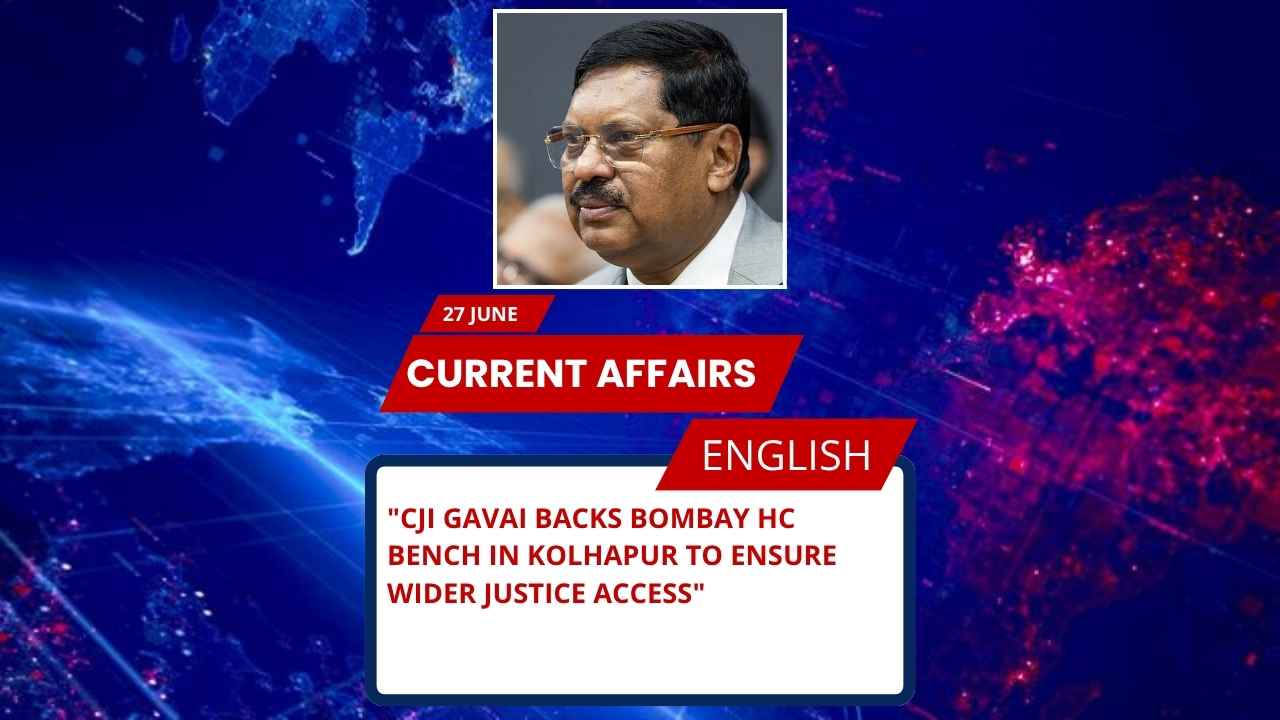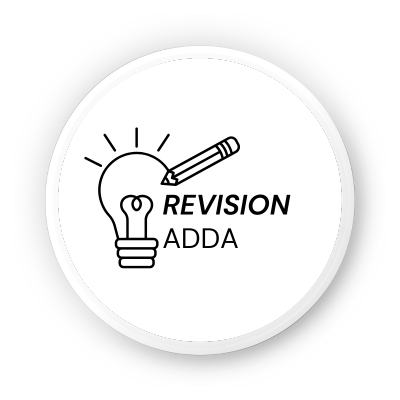
Key Points for SSC/UPSC and Government Exams
- CJI B R Gavai supports proposal for new Bombay High Court bench in Kolhapur.
- Existing benches: Mumbai (Principal), Nagpur, Goa, and Aurangabad (Chhatrapati Sambhajinagar).
- CJI Gavai emphasizes justice access in all corners of the country.
- The demand is region-specific: Western Maharashtra.
- Could lead to administrative decentralization and faster case disposal in the region.
- Reflects judicial infrastructure priorities in India.
Complete Explanation
Introduction
Chief Justice of India B R Gavai, during a felicitation event at Chhatrapati Sambhajinagar (Aurangabad), expressed his support for a demand to establish a bench of the Bombay High Court in Kolhapur, Maharashtra. He emphasized the need for justice to be accessible to all citizens, including those from remote corners of the country.
Current Structure of Bombay High Court
The Bombay High Court, one of the oldest high courts in India, currently operates through:
- Principal Bench: Mumbai
- Circuit Benches: Aurangabad (Chhatrapati Sambhajinagar), Nagpur, and Goa
However, western Maharashtra — which includes districts like Kolhapur, Sangli, Satara, and Sindhudurg — remains underserved by direct judicial infrastructure. A new bench in Kolhapur could bridge this gap and reduce travel and case backlog.
CJI Gavai’s Statement
Justice Gavai said, “Justice must reach every citizen, in every corner.” This reflects the vision of the Supreme Court and judicial reforms focusing on accessibility, efficiency, and inclusiveness in justice delivery.
Why Kolhapur?
Kolhapur is a major cultural and administrative hub of western Maharashtra. The establishment of a High Court bench here would:
- Reduce travel burden on litigants and lawyers
- Ease pressure on other benches
- Ensure faster delivery of justice
State Profile: Maharashtra
- Capital: Mumbai
- Chief Minister: Eknath Shinde
- Governor: Ramesh Bais
- Major Rivers: Godavari, Krishna, Bhima
- Important National Parks: Tadoba, Sanjay Gandhi, Navegaon
- Major Cities: Mumbai, Pune, Nagpur, Nashik, Kolhapur
- Lok Sabha Seats: 48 (largest after Uttar Pradesh)
Expected MCQs for Exams
1. Chief Justice B R Gavai recently supported the establishment of a new bench of the Bombay High Court in which city?
A. Pune
B. Nagpur
C. Kolhapur
D. Nashik
Answer: C. Kolhapur
2. Which of the following cities does not currently have a bench of the Bombay High Court?
A. Aurangabad
B. Goa
C. Kolhapur
D. Nagpur
Answer: C. Kolhapur
3. Who is the current Chief Justice of India as of June 2025?
A. D.Y. Chandrachud
B. U.U. Lalit
C. Ranjan Gogoi
D. B R Gavai
Answer: D. B R Gavai
4. Where did CJI Gavai make the statement supporting the Kolhapur bench proposal?
A. Mumbai
B. Goa
C. Chhatrapati Sambhajinagar
D. Pune
Answer: C. Chhatrapati Sambhajinagar
UPSC-Style FAQs
Q1. What is the significance of establishing new High Court benches in India?
Answer:
Establishing new High Court benches plays a crucial role in ensuring accessible and timely justice. India’s judicial system often struggles with case backlogs, and litigants in remote regions face geographical barriers in seeking justice. Creating more benches, especially in underserved areas like Kolhapur in western Maharashtra, facilitates:
- Judicial decentralization
- Efficient case disposal
- Reduced litigation cost for citizens
- Better regional legal access, in line with Article 39A of the Constitution (Equal justice and free legal aid)
From a governance perspective, this initiative aligns with the broader judicial reforms aimed at democratizing access to legal institutions.
Q2. How does the judiciary ensure justice reaches every corner of India?
Answer:
The Indian judiciary promotes accessible justice through:
- Establishing circuit and permanent benches of High Courts
- Promoting e-courts and virtual hearings
- Conducting mobile courts in rural areas
- Advocating for legal aid services under NALSA (National Legal Services Authority)
- Supporting regional language use in courts for better understanding
CJI Gavai’s support for a Kolhapur bench symbolizes a continuation of these principles, ensuring that even interior regions are not excluded from the ambit of speedy and affordable justice.
Q3. What challenges could arise in setting up a new High Court bench?
Answer:
While the benefits are substantial, several challenges may hinder the establishment of new benches:
- Administrative and logistical costs
- Opposition from lawyers and bar associations of existing benches fearing case migration
- Coordination between judiciary and executive
- Infrastructure readiness in new locations
Despite this, the long-term benefits — including reduced pendency and improved judicial reach — justify the efforts and investments.
Q4. In what ways does this development align with the constitutional vision of justice?
Answer:
The proposal aligns with the Directive Principles of State Policy, especially:
- Article 39A: Equal justice and free legal aid
- Article 38: Promoting welfare of people by securing social justice
The Constitution envisions a participatory and accessible judicial system, and extending High Court benches to neglected geographies like Kolhapur supports this vision.







